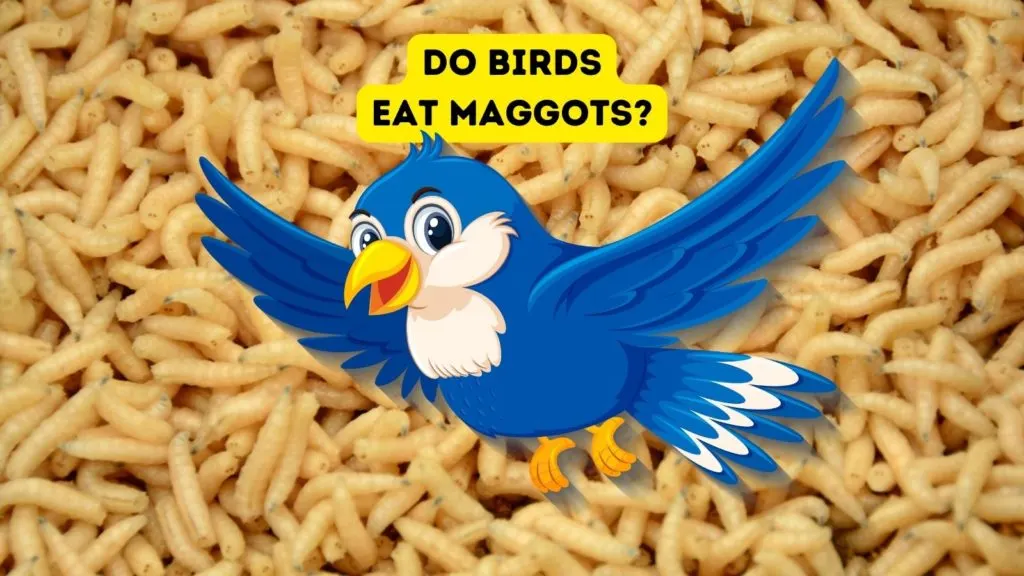It’s natural to shudder at the mention of maggots; however, in the avian world, these squirming larvae are a coveted delicacy! Just as we relish a plate of fresh strawberries and cream or indulge in our favorite chocolates, birds treat themselves with juicy bundles of protein-rich maggots.
Maggots, the larvae of flies, are a common source of protein in the insect world. This makes them an excellent food source for birds, especially during breeding and nesting seasons when birds require additional protein. The soft bodies make maggots easily digestible, especially for young birds.

Which Birds Eat Maggots?
Among these avian diners, Red-winged blackbirds may stand out as they actively seek out larvae in marshlands, but the list of maggot lovers does not stop there.
- Robins and Thrushes: These ground-feeding birds often eat insects and are likely to consume maggots when they find them.
- Starlings: Known for their diverse diet, starlings readily eat maggots and other larvae.
- Wrens: Small insect-eating birds like wrens will consume maggots as part of their natural diet.
- Woodpeckers: Some woodpecker species, which typically feed on insects found in wood, may also eat maggots when available.
- Bluebirds: Insectivorous birds like bluebirds are likely to include maggots in their diet.
- Chickadees and Titmice: These small birds, while often seen at seed feeders, also eat insects and would likely consume maggots.
- Pigeons: Lastly, let’s not forget our busy city-dwellers – pigeons! Traced back to their instinctive behaviors for scavenging practices; maggots offer a rich source of proteins to help them thrive amidst urban hustle-bustle.
Next time you see a bird pecking away at what appears like nothingness, consider this – could it be indulging in its very own, gourmet maggot meal?
What Can I Buy that’s Similar?
Mealworms, an all-time favorite among insect-eating birds such as sparrows and Blue Jays among others offer protein rich feasts equivalent to maggots.
Available both alive and dried, they can be mixed with other seed blends or served alone on bird tables or ground feeders.
Alternatively, you could opt for insect suet pellets – these are a phenomenal protein-packed choice which provides the handy benefit of practical no-mess feeding. Suet cakes incorporated with insects provide not only nutritional value akin to that provided by devouring juicy maggot morsels but also foster diversity in your resident backyard birds’ diet thereby replicating the richness of their wild-feeding habits.
Delving further into nature’s gritty gastronomy reveals an unparalleled charm and harmony. On one hand, these writhing creatures serve as fabulous composters contributing positively to our ecosystem, while on the other they form an essential link in the food chain by being a high-protein meal especially attractive to certain bird species such as starlings and sparrows.
So next time you spot a bird intently pecking away at something seemingly revolting, just remember – one creature’s churning bag of disgust is another’s tantalizing treat!
More Posts You Might Like
- 8 Letter Bird Names - August 14, 2024
- 7 Letter Bird Names - August 14, 2024
- 7 Birds Named After Famous People - July 23, 2024
